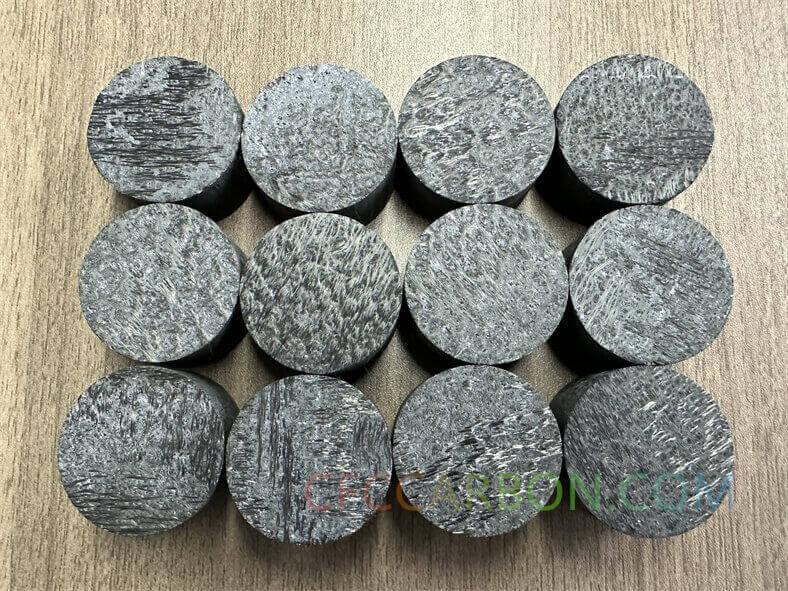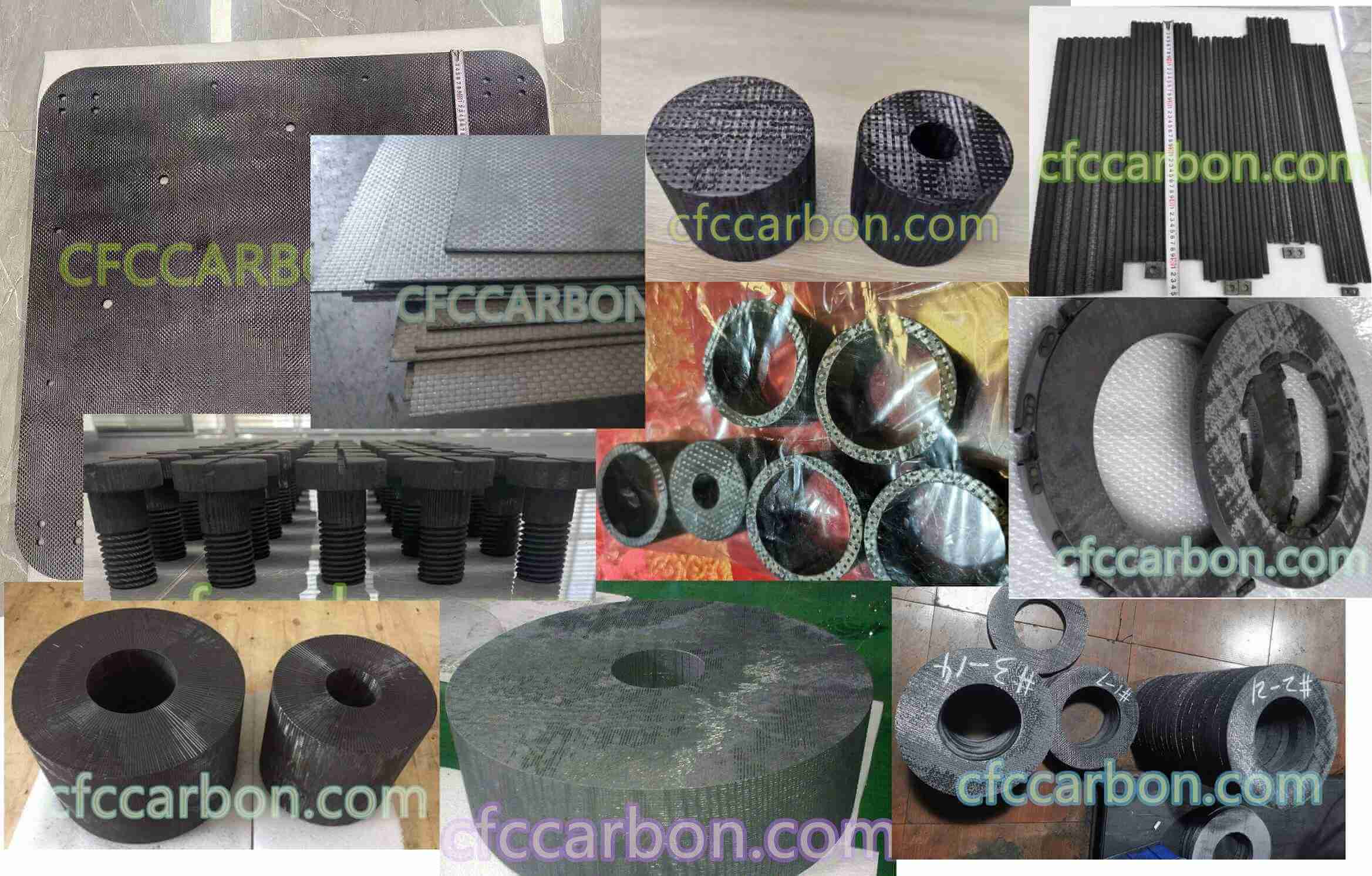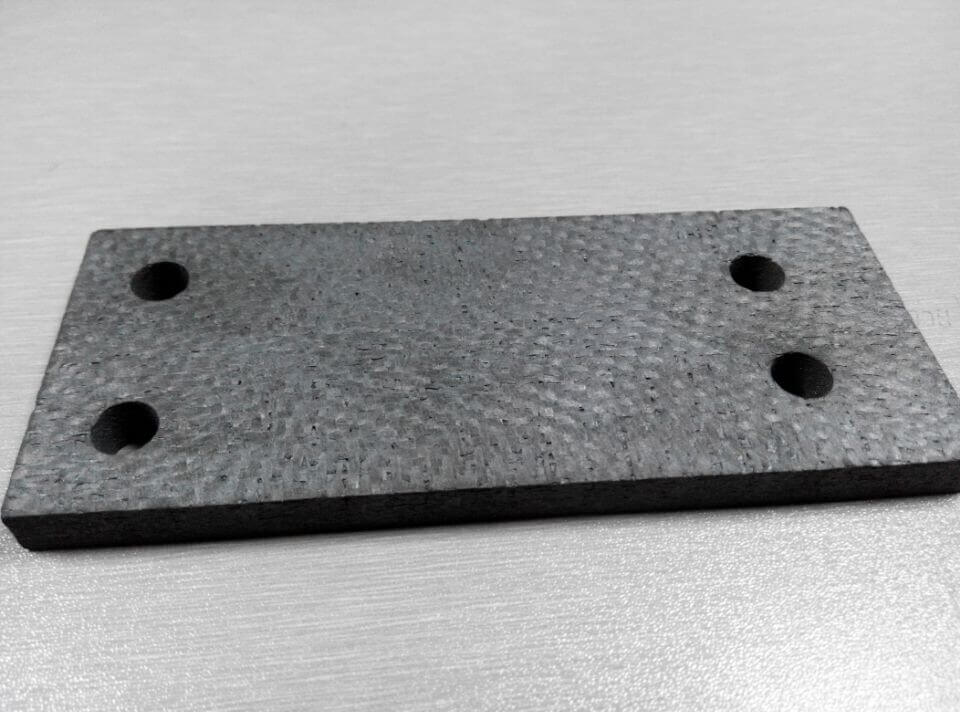Title: Tribological Performance of Fast-Carbonized Carbon/Carbon Composites: A Breakthrough in High-Temperature Friction Solutions
Introduction
Carbon-carbon (C/C) composites, renowned for their exceptional thermal stability and mechanical strength, are revolutionizing industries requiring extreme durability under harsh conditions. Among these, fast-carbonized carbon/carbon composites stand out as a cutting-edge innovation, offering unparalleled tribological performance for high-temperature applications. This article explores the manufacturing, classification, and unique properties of these materials, with a focus on their friction and wear resistance capabilities.

3D carbon fiber composite material manufacturer factory (3)
What Are Carbon/Carbon Composites?
Carbon/carbon composites (C/C) are advanced materials composed of carbon fiber reinforcements embedded in a carbon matrix. This all-carbon structure combines the high strength-to-weight ratio of carbon fibers with the thermal and chemical stability of carbon matrices, making them ideal for aerospace, automotive braking systems, and industrial machinery814. CFC Carbon Co., Ltd., a global leader in C/C production, utilizes advanced techniques like chemical vapor infiltration (CVI) and pitch-based densification to create composites with densities up to 1.95 g/cm³ and tailored microstructures.
Fast-Carbonized C/C Composites: A Game-Changer
Fast-carbonized C/C composites are engineered through accelerated pyrolysis and densification processes. Unlike traditional methods requiring months for matrix carbonization, this approach employs high-pressure impregnation (HPIC) and rapid thermal gradient CVI to reduce production cycles by 50–70% while maintaining superior material integrity. For example, CFC Carbon’s patented ultra-high-pressure impregnation and carbonization (UHPIC) achieves full densification in weeks rather than months, optimizing efficiency for industrial-scale applications.
Production Process: Precision and Innovation
-
Preform Fabrication: Carbon fibers are woven into 2D, 2.5D, or 3D architectures to meet specific mechanical and thermal requirements.
-
Matrix Densification:

carbon fiber composite material manufacturer in China(1)
-
Liquid Precursor Route: Pitch or resin is impregnated under high pressure (up to 100 MPa) to maximize carbon yield (90%+).
-
Gas-Phase Route: CVI deposits pyrolytic carbon within preform pores, enhancing density and oxidation resistance.
-
-
Fast Carbonization: Controlled rapid heating (up to 3000°C) forms a highly graphitized matrix, reducing residual stress and improving tribological properties.
Classification of C/C Composites
CFC Carbon’s product portfolio includes:
-
2D Composites: Ideal for flat components like heater plates, offering balanced in-plane strength.
-
2.5D Composites: Enhanced interlayer bonding for aircraft brakes, reducing wear by 25–50% compared to steel.
-
3D/4D Composites: Multidirectional fiber alignment for rocket nozzles and hypersonic vehicle components, withstanding temperatures exceeding 3000°C.
Key Properties Driving Tribological Excellence

C-SIC
-
High-Temperature Stability: Retains 85% of room-temperature strength at 2500°C, critical for brake discs and turbine components.
-
Low Thermal Expansion: Minimizes dimensional changes during thermal cycling, ensuring consistent friction coefficients.
-
Self-Lubricating Behavior: Carbon’s layered structure reduces adhesive wear, achieving friction coefficients as low as 0.1–0.3 under dry conditions.
-
Abrasion Resistance: Nano-crystalline graphite matrices (e.g., CFC Carbon’s S-C/C composites) exhibit linear ablation rates of 0.03 mm/s at 3000°C, outperforming conventional ceramics.
Tribological Performance in Real-World Applications
-
Aerospace Brakes: CFC Carbon’s 2.5D C/C brake discs demonstrate 3000+ landing cycles with minimal wear, thanks to their low density (1/4 of steel) and high thermal conductivity.
-
Industrial Machinery: Copper-impregnated C/C seals reduce friction losses by 40% in high-load bearings, enhancing energy efficiency.
-
Hypersonic Vehicles: 3D composites with SiC coatings achieve ablation rates 34% lower than traditional materials, ensuring longevity in extreme environments.
Conclusion
Fast-carbonized C/C composites represent a paradigm shift in high-temperature tribology, combining rapid manufacturing with unmatched wear resistance. As industries demand lighter, more durable solutions, CFC Carbon’s innovations in material design—such as 3D architectures and hybrid ceramic matrices—position these composites at the forefront of advanced engineering. For more details, explore CFC Carbon’s product portfolio or their technical insights on C/C manufacturing.
related news /articles:
CVI CVD Carbon Carbon Composite Material, Manufacturer in China
Gas phase infiltration of carbon carbon composites-CFCCARBON LTD
Tribological behavior of fast-carbonizad carbon/carbon composite (3)